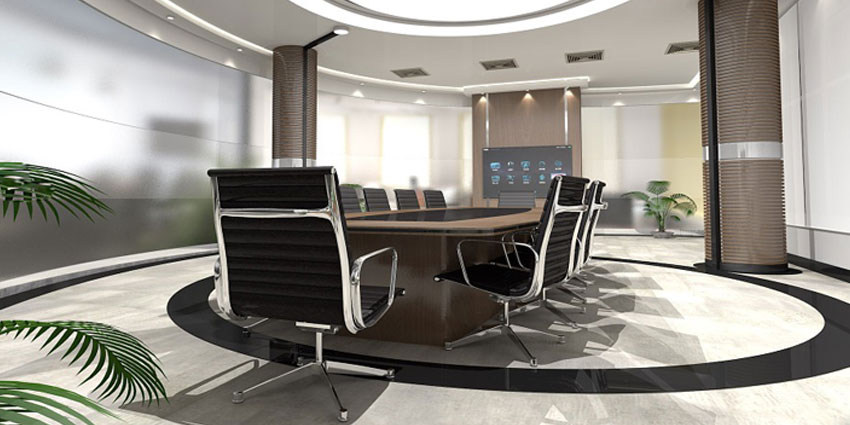As video conferencing and collaboration grows in popularity, we examine the key hardware purchasing decisions facing your business…
We spend so much time talking about software solutions and cloud-based platforms in UC these days that it is easy to forget how important hardware is to business communications.
Video conferencing and collaboration is the ideal category to remind us of this importance. Yes, nowadays more or less everyone carries around a viable video recorder and player in their pocket – in fact, the emergence of smart mobile devices is perhaps one key reason why we seem to increasingly take hardware for granted in general.
But how effective is a smartphone really for holding high quality virtual meetings? They undoubtedly provide a mobility option, but do they provide the definition and fidelity you want for those critical communications? When you hold large meetings, especially with physical meeting rooms full of people, do you want everyone glued to a 4 inch screen in front of them? And are small screens the best option for collaboration?
If you want to get the best from video conferencing, hardware is an essential consideration. There two broad categories of equipment – devices to record and broadcast, i.e. cameras and microphones, and then screens to show the video stream. These are supported by a variety of back-end and networking solutions, which may be hardware or software.
The first step in choosing the right video endpoints for your business is to think through exactly how and where conferencing and collaboration is going to be used in your business. Key questions to ask are as follows:
- What is the main purpose of video conferencing, i.e. is it mainly for internal or external communications, for formal meetings or more ad hoc team collaboration sessions?
- Who uses video conferencing?
- Where will participants connect from, i.e. at their desks, in a dedicated meeting space, externally?
- To what extent can video conferencing influence overall business performance? This will help you to decide how much you want to invest.
Types of video endpoint
Once you have assessed your objectives for using video conferencing, you can look at which equipment options suit your needs best. Below we’ll take a look at five types of video conferencing and collaboration equipment, assessing the circumstances where they provide the most benefit and, where applicable, comparing them to software or cloud-based alternatives.
Desktop conferencing endpoints
The main ingredients for taking part in a video conference are a screen, a camera and a microphone/speaker combination for audio. Desktop conferencing hardware solutions come in any combination of these three, from fully integrated standalone units to cameras, audio endpoints and broadcast boxes you can add to your existing computer screen or deskphone.
Desktop conferencing is the right solution if employees are going to be making high volumes of video calls in their day to day lives. They suit organisations looking to encourage more informal team collaboration, especially across different sites, to replace formal scheduled meetings.
The alternative to desktop conferencing endpoints is to simply use the camera and audio capabilities built into a desktop PC or laptop. Quality is the issue here, as there is no guarantee built-in hardware will provide the same definition and fidelity as specialist equipment. Likewise, having a dedicated broadcast box can improve stream quality and reduce latency. Some integrated desktop solutions also include touchscreens for improved access to collaboration tools.
Room-based equipment

Equipping meeting and huddle rooms for video conferencing suits businesses where there is less emphasis on individual agents and small teams connecting ad hoc from their desks, but a requirement to connect to remote colleagues or external partners during larger meetings. Room-based conferencing equipment tends to be built around a large screen, with specialised microphones to pick up audio from a whole room without babble and interference.
There are a couple of different models how participants take part in a video conference from a meeting room. One is to broadcast everyone in the room as a group, in which case a good quality camera is required, perhaps with the capability to pan and zoom onto individual speakers. An alternative is to have the room participate from their own individual devices, typically using tablets or laptops. Multiple screen and connectivity support therefore becomes crucial.
Bridges, signalling and transcoding
How you connect participants in a virtual conference is one of the most technically demanding aspects. Imagine the situation above, with numerous participants in a meeting room connecting via their own devices. What if they are all using different devices?
Video can be broadcast and shared using different signalling protocols. If you are concerned about making sure all endpoints can communicate with each other, you can choose equipment that all operates on the same signals. Otherwise, you need transcoding equipment – usually found in multipoint control units (MCUs), or hardware bridges, which enable multiple users to join in on a video conferencing session.
Software MCUs are easier to set up than the hardware versions, as they don’t need the same physical connections. Another alternative to bridge and transcoder hardware is cloud-based virtual meeting rooms (VMRs). Designed to be hardware agnostic, these provide immediate access from any endpoint without the need for separate bridges, and are ideal for businesses looking for flexibility in their video conferencing solutions.
Screens, whiteboards and telepresence
Alongside audio and visual broadcast equipment, the other mainstay of meeting room teleconferencing hardware is the screen. Such is the development of the technology in this area that it deserves to be considered as a category in its own right.
Smart screens and interactive whiteboards allow collaboration to be brought to the meeting room. Just as screen, file sharing and whiteboarding tools are increasingly key components of team messaging and collaboration apps, demand for equipment which allows teams to interact and work on the same materials as a group is growing.
Whiteboards offer two key possibilities. One, by connecting to individual devices, meeting participants can annotate or mark up a document or file from the tablet or laptop, and all amendments are shown in real time on a large screen for the group to review. This works equally for remote participants and for those in the same room.
The other option is to use the interactive whiteboard itself as a medium for sketching out ideas. Tools can be used to annotate and mark up on the big screen. This is particularly useful for making presentations to a virtual as well as physical audience, where the work you do on screen is seen on the remote participants’ devices.
This all ties into a growing interest in using technology to make meetings and conferences, both physical and virtual, more interactive. Telepresence describes technologies which aim to replicate the experience of being sat in a room together for distributed participants. Equipment ranges from very large HD screens and surround sound audio for a more immersive experience, to using augmented reality 3D projections to put a digital image of a person in the room, or using VR headsets plugged into visual VMRs.
Telepresence can be seen as the next generation of room-based video conferencing and collaboration equipment. While it does create a more engaging, immersive meeting experience, as things stand the outlay on such equipment is considerable.






